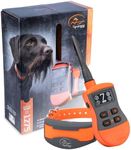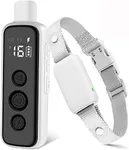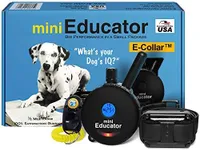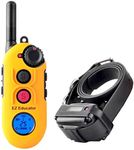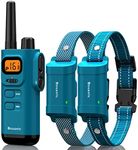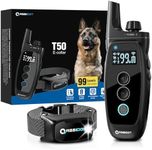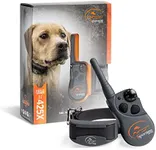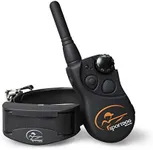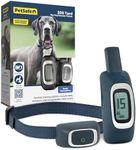Buying Guide for the Best Shock Collar For Large Dogs
Choosing a shock collar for a large dog requires careful consideration to ensure both effectiveness and the safety of your pet. The right collar can help with training and behavior correction, but it's important to understand the features and how they relate to your dog's size, temperament, and training needs. Always prioritize humane training methods and use a shock collar as a last resort or under professional guidance.Stimulation LevelsStimulation levels refer to the range of intensity settings the collar can deliver, from very mild to stronger corrections. This is important because large dogs often have thicker skin and fur, which may require higher levels to be effective, but you still want to start with the lowest setting that gets your dog's attention. Collars typically offer a range from low to high, sometimes with dozens of incremental steps. If your dog is sensitive or new to training, a collar with more gradual levels allows you to fine-tune the correction. For stubborn or very large breeds, a collar with higher maximum levels may be necessary, but always use the minimum effective level for your dog.
Collar Size and AdjustabilityCollar size and adjustability refer to how well the collar fits around your dog's neck and whether it can be comfortably secured. This is crucial for large dogs, as a collar that's too small can be uncomfortable or ineffective, while one that's too loose may not deliver consistent contact. Collars are usually adjustable within a certain range, so check the minimum and maximum neck sizes listed. For large breeds, ensure the collar can expand enough to fit comfortably without being too tight, and that the contact points reach the skin through thick fur.
RangeRange indicates how far the remote can communicate with the collar, which is important if you plan to use the collar outdoors or in large spaces. Ranges can vary from a few hundred feet to over a mile. For backyard training or walks, a shorter range may be sufficient, but for off-leash training in parks or open areas, a longer range ensures you can always reach your dog. Choose a range that matches where you plan to use the collar most often.
WaterproofingWaterproofing describes whether the collar can withstand exposure to water, such as rain, puddles, or swimming. This is important for large dogs who are often active outdoors or enjoy water. Some collars are water-resistant (splash-proof), while others are fully waterproof and can be submerged. If your dog is likely to get wet, choose a fully waterproof collar to ensure reliability and safety.
Battery Life and ChargingBattery life and charging refer to how long the collar and remote last between charges and how they are recharged. Longer battery life means less frequent charging, which is convenient for regular use. Some collars use replaceable batteries, while others are rechargeable via USB or a charging dock. If you use the collar daily or for extended periods, look for a model with a long-lasting battery and easy charging options.
Training ModesTraining modes are the different types of corrections the collar can deliver, such as beep, vibration, and static shock. This is important because not all dogs respond the same way, and you may want to start with less invasive modes before using shock. Collars with multiple modes give you flexibility to find what works best for your dog. If your dog is sensitive or you prefer positive reinforcement, a collar with strong vibration or sound options may be sufficient.
Safety FeaturesSafety features include things like automatic shut-off, lock buttons, or progressive correction to prevent accidental or excessive stimulation. These are important to protect your dog from harm and to ensure humane training. Look for collars with built-in safeguards, especially if you are new to using shock collars or if your dog will wear the collar unsupervised for any period.

